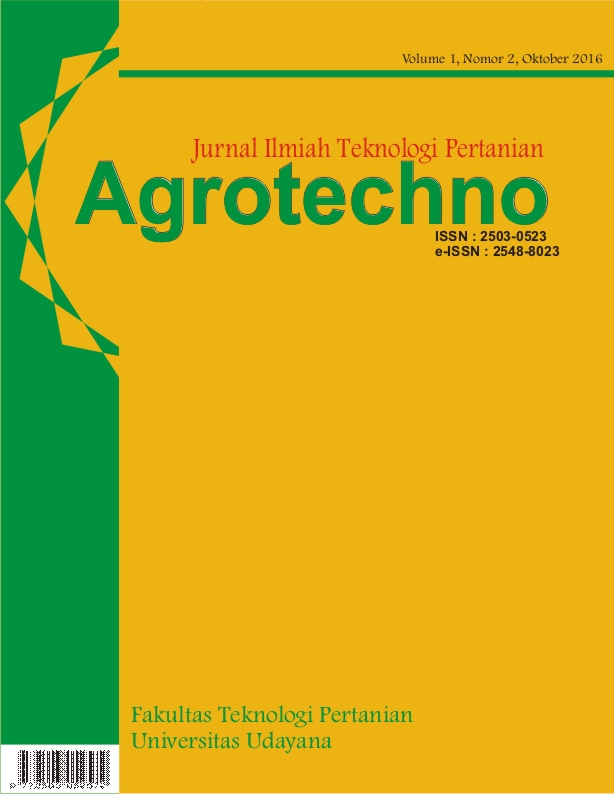Pengembangan Sistim LEISA untuk Meningkatkan Produktivitas dan Kualitas Umbi Kentang (Solanum Tuberosum L.)
Abstract
Tujuan penelitian aplikasi sistem LEISA (Low External Input on Sustainable Agriculture) padabudidaya kentang adalah untuk peningkatan produktivitas dan kualitas kentang. Percobaandirancang dengan rancangan acak kelompok (RAL) dengan lima perlakuan dosis pemupukankompos kotoran ayam. Dosis pemupukan kompos adalah: 0 kg/ha (kontrol), 10 kg/ha, 12,5 ton/ha,15 ton/ha, dan 17,5 ton/ha, dan 20 ton/ha yang dikombinasikan dengan pupuk NPK dosis 250kg/ha. Parameter yang diamati adalah: sifat fisik tanah, kesuburan lahan, populasi bakteri di tanah,produktivitas lahan dan kualitas umbi kentang. Sistim LEISA dengtan dosis pupuk kompos 20ton/ha mampu menghasilkan kentang menjadi 30,7 ton/ha atau 1,17 kg/pohon. Jumlah umbikentang konsumsi hasil penelitian 2016 adalah sebesar 76,84–87,71 %, sedangkan kentang kelasbibit adalah 9,25–22,06 %. Porositas tanah mencapai 50 % dengan kemampuan tanah menahanair 28 % pada dosis pemupukan kompos kotoran ayam 15 ton/ha. Pada dosis ini kandungan bahanorganic tanah lebih dari 5 % dengan KTK 23,8 me/100g atau lahan pada kategori subur. Selainitu, pada kondisi pH mendekati netral (6,8–6,9) bakteri yang ada dengan populasi 2,2 x 103–4,7 x108 cfu
The research objective of applications LEISA (Low External Input on Sustainable Agriculture)system on the cultivation of potatoes was to increase productivity and quality of potatoes tubers.The experiment was designed with a randomized block design (CRD) with six treatments ofchicken manure compost fertilizer dosage. Dose fertilizing compost are: 0 ton/ha (as control), 10tons/ha, 12.5 tons/ha, 15 tons/ha, and 17.5 tons/ha and 20 tons/ha. This fertilizer was combinedwith NPK fertilizer 250 kg/ha. Parameters measured were: the physical properties of the soil, landfertility, the population of bacteria in the soil, land productivity and quality of potato tubers.LEISA systems with dose of compost 20 tons/ha are able to produce potatoes to 30.7 tons/ha or1.17 kg/tree. Total consumption of potato tuber from the research was 76.84 - 87.71%, while theclass of seed potatoes was 9.25 - 22.06%. Porosity of the soil was more than 50% with the abilityof soil to retain water 28 % w.b at doses of chicken manure fertilizer compost 15 tons/ha. At thisdose soil organic matter content of more than 5% with CEC was 23.8 me/100g or land wascategorized fertile soil. In addition, at pH close to neutral (6.8 to 6.9) existing bacterial populationwas 2.2 x 103 - 4.7 x 108 cfu.










